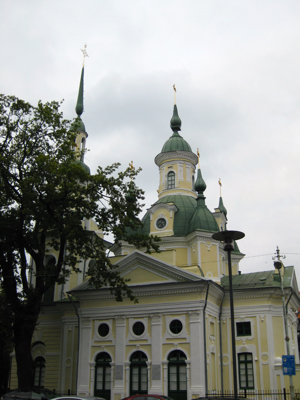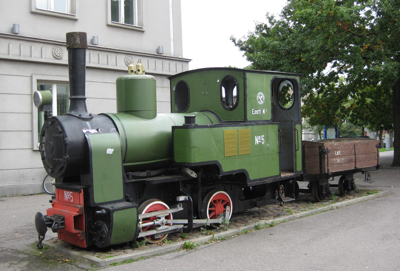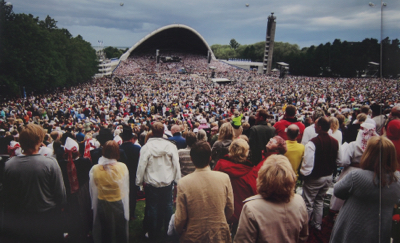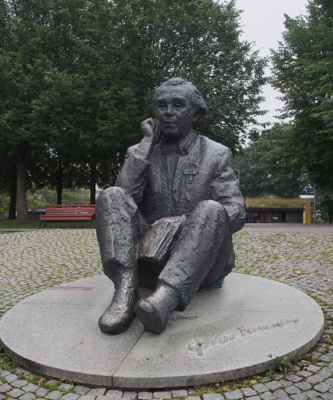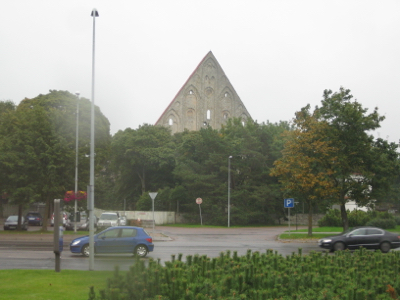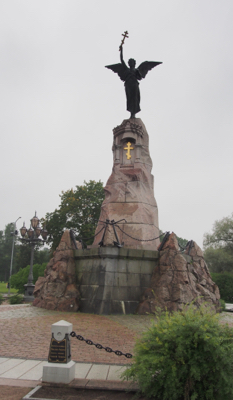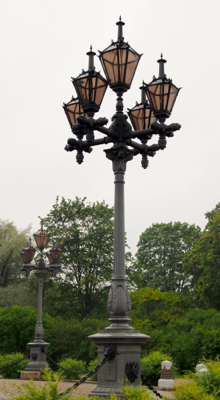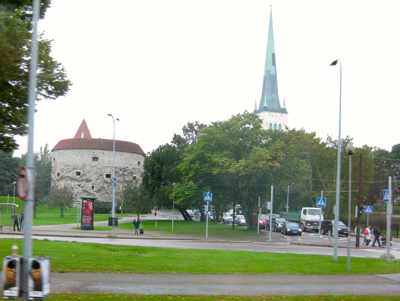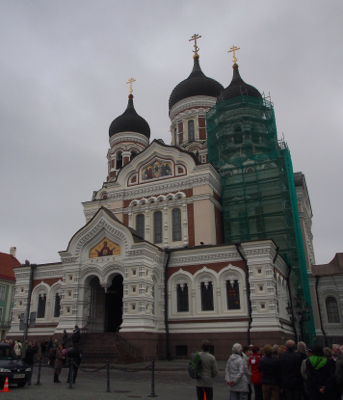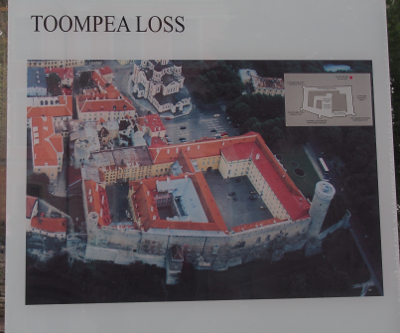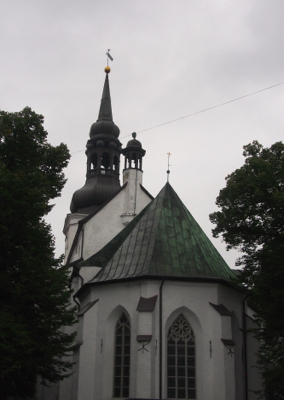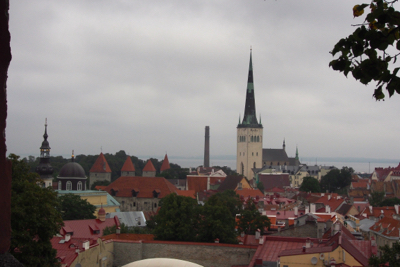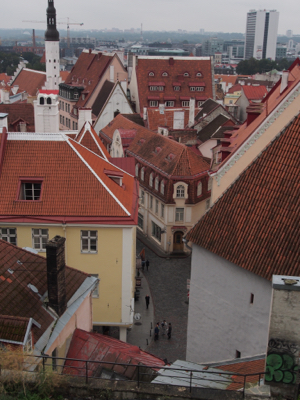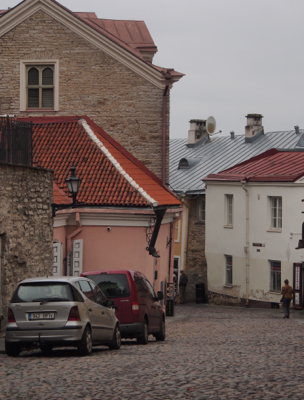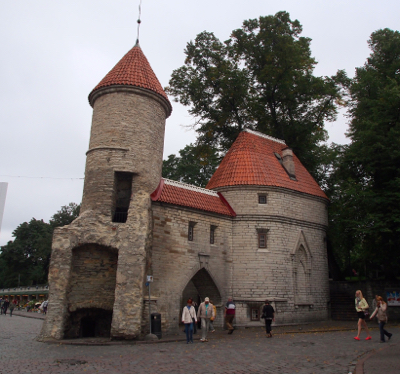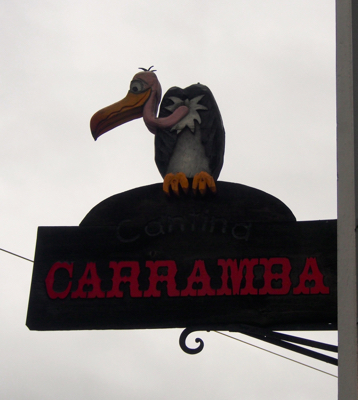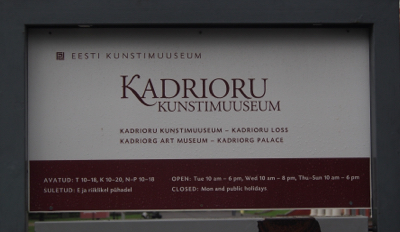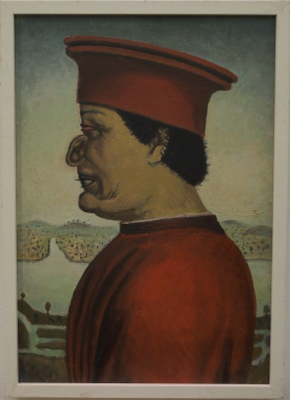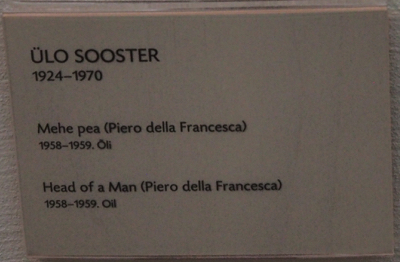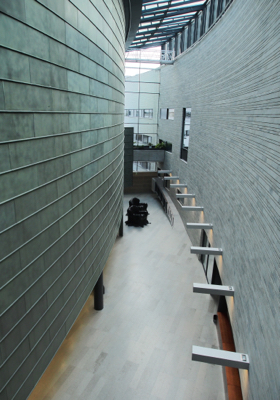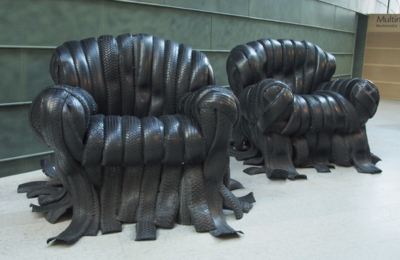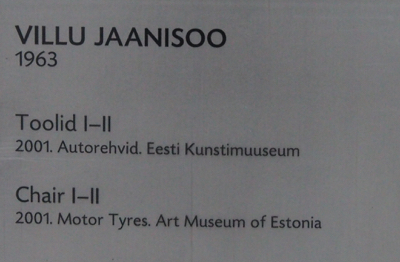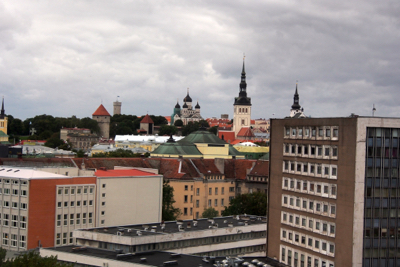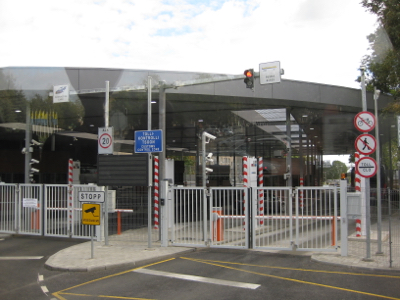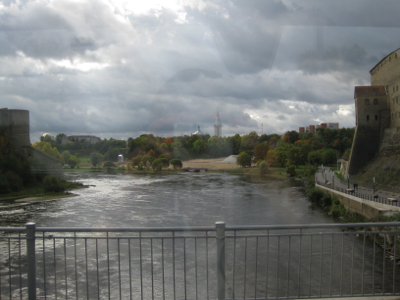We crossed into Estonia at Ainazi. Of course there is no border control any more. We did not even see a “Welcome to Estonia” sign.
Estonia is completely different from Lithuania and Latvia. It is closer to Finland and would like to model itself after Finland. During the Soviet years, Estonians were able to get TV and radio from Finland. Skype technology was invented in Estonia and the population is very computer literate.
On our long drive today we stopped in Parnu to stretch our legs. It is a seaside resort with a short pedestrian street.
Flag of Estonia - Blue (sky), Black (soil), and White (hope)
Parnu - St. Catherine’s Church
Monument to Parnu Narrow Gauge Railway
Thurs., 9/17/15 – Tallinn
Well, it rained some yesterday and this morning it was foggy and misting rain in the morning but we did our city tour anyway. As we drove out to the Song Festival Grounds we could see how different Tallinn is from the other Baltic capitals. There are many old wooden buildings and right among them are new, modern glass highrises. It is much more like a modern city than Riga or Vilnius. The city is still 68% Estonian speaking and 32% Russian speakers.
On the bus yesterday, Migle played a documentary of “The Singing Revolution” about how Estonia went about achieving their independence once Gorbachev declared glasnost and perestroika. They started by singing a song about their country at their annual music festival. Thousands of citizens sang emotionally. Once they had freedom of speech, leaders began speaking of more freedoms from Soviet control and repression and the people kept singing of hope. No one was killed in their move for independence while 14 Lithuanian and 7 Latvians were killed by Soviet troops.
We got off the bus to look down into the Song Festival amphitheater with a grass seating area for 100,000 people. Since the Singing Revolution, the festival is held every five years. There is a statue of a sitting Gustav Ernesaks (1903 – 1993) who was one of the festival initiators.
We drove along the Baltic (Bay of Finland) coast. It has a sandy beach but many large rocks that are erratics left when the glaciers pulled back north.
We looked at the ruins of St. Brigitte’s convent built in the 14th c. and then drove through the marina that was the 1980 Moscow Olympics’ sailing venue and Olympic village.
We stopped to look at the Angel holding an Orthodox cross at the Russalka Monument for the Russian battleship that sank off shore in a violent storm. The ship was later found with the bow buried in mud and the tail up.
Poster from the Singing Revolution
Singing Revolution Festival Grounds
Statue of Gustav Ernesaks,one of the Singing Revolution leaders
Ruins of St. Brigitta’s Convent
Russalka Monument in Kadriog Park
Fancy lamp post
Our bus driver took us into town and dropped us at the Upper Town of the Old Town, just outside the Toompea Loss or Castle which now houses the Estonian Parliament.
The Upper Town was where the richest people, the nobles, lived and where the government buildings were. The Lower Town was for the common people. We entered the city wall (not much of it remains) at the Fat Margaret tower and gate; the tower is short and fat. Across from the parliament is the elaborate Alexander Nevsky Cathedral with onion domes. It was built in 1900. We went inside to look at the iconostasis with only two tiers and lots of gold and silver(no photos). It was definitely a Russian Orthodox Church.
We walked to two lookouts to look down on the Lower Town. The streets are crooked and show no pattern. There are several churches with spires including the 13th c. St. Mary’s cathedral that was Roman Catholic from Crusader times but changed to Lutheran during the Reformation.
We walked into the Town Hall Square that is surrounded by outdoor cafes. On the square is the oldest apothecary, which still operates as a modern pharmacy but has a room of old medicines.
Fat Margaret Tower and St. Olaf’s Church steeple
Alexander Nevsky Cathedral
Alexander Nevsky Cathedral
Diagram of Toompea Loss or Castle
Toompea Loss or Castle (Parliament)
St. Mary’s Church
St. Olaf’s church steeple
Old Town
Crooked, cobbled streets
Old town wall
Beer Hall
Town Square
Viru Gate
Cute sign
Fri., 9/18/15 – Tallinn
Today we walked two blocks with Migle and our Tallinn guide, Catherina, and took a two-car tram out to the Kadriorg Park to see the palace residence built by Russian Tsar Peter the Great and the manicured gardens for Catherine I. Kadriorg means Catherine’s Valley.
We walked on to the Kumu Art Museum of Estonia. The building is a very unique shape with glass and copper outer walls. The architecture was modern art itself. The museum houses Estonian artists’ works from the 18th c. to mid-20th c. German artists living in Estonia painted and sculpted the typical European art – portraits and Estonian landscapes and the Cesis Altarpiece removed from the church we visited in Cesis, which became Lutheran and did not want the Altarpiece. The works of Estonians Kohler, Raud, and Magi were well represented.
On the fourth floor were art pieces from 1945 to 1991. Perhaps the most defining style was the period of “socialists’ realism.” Artists had to paint what the Soviet government wanted. There were a set of rules that had to be followed and, of course, the state was the only client for art. Paintings had to be of a “common” life, people had to look happy, the subjects had to represent Soviet ideals, etc. Once Stalin died, artists could express their emotions. One painting, by Ulo Sooter, "Head of a Man," is a caricature of the Duke of Urbino, the original (by Piero della Francesca) of which we saw in Florence this past summer. Sooter hasput eyes, ears, and nose in the wrong places - for whatever artistic reason.
As artists began to return from Siberia they were more able to paint their own things. By 1970 there was some pop art and in the 1980’s “hyper-realism” attempted to “capture the moment.” The exhibits were an expression of Estonian history and very interesting. Forty-five minutes only opened the door to this country’s art.
Kadriorg Park and Palace
KUMU Museum
KUMU Museum
The old and the new from our hotel room
We ate lunch at Gourmet Koffee, which sells Columbian and Guatemalan coffee. We had salad, a thick slice of tender pork with mashed potatoes, and carrots and beets. Dessert was an Estonian treat of whipped cream with ground up grains to thicken it and cranberry sauce and wonderful Columbian coffee.
We rode the tram back to our hotel and rested until dinner time.
Sat., 9/19/15 – Tallinn, Estonia to Narva, Estonia to St. Petersburg, Russia
On our drive across northern Estonia to the Russian border we saw flat landscape with small farms, cattle, and woods. In the trees along the median we saw several mushroom pickers walking along with their baskets.
We arrived in Narva early and ate a full lunch at 10:50 AM at King Restaurant. This was necessary because Narva is where we cross into Russia and the border crossing could take anywhere from one to four hours. Narva is divided by a river and the west of the river is Estonia and the east is Russia.
Lunch
Wedding outside
Border crossing
Crossing the Narva River into Russia
| Return to Top | Return to Itinerary | Return to Trips page to view other trips | Return to Dreamcatcher Home Page |


